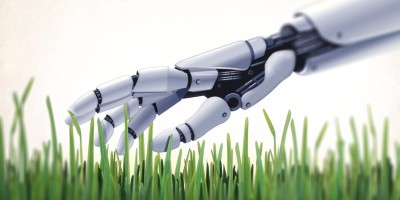Micro- and nanorobots present a promising approach for navigating within the body and eliminating biofilm infections. Their motion can be remotely controlled by external fields and tracked by clinical imaging. They can mechanically disrupt the biofilm matrix and kill the dormant bacterial cells synergistically, thereby improving the effectiveness of biofilm eradication.

References
Choi, V., Rohn, J. L., Stoodley, P., Carugo, D. & Stride, E. Drug delivery strategies for antibiofilm therapy. Nat. Rev. Microbiol. 21, 555–572 (2023).
Stewart, P. S. & Costerton, J. W. Antibiotic resistance of bacteria in biofilms. Lancet 358, 135–138 (2001).
Nelson, B. J. & Pané, S. Delivering drugs with microrobots. Science 382, 1120–1122 (2023).
Hwang, G. et al. Catalytic antimicrobial robots for biofilm eradication. Sci. Robot. 4, eaaw2388 (2019).
Dong, Y. et al. Endoscope-assisted magnetic helical micromachine delivery for biofilm eradication in tympanostomy tube. Sci. Adv. 8, eabq8573 (2022).
Yang, L. et al. Autonomous environment-adaptive microrobot swarm navigation enabled by deep learning-based real-time distribution planning. Nat. Mach. Intell. 4, 480–493 (2022).
Boudarel, H., Mathias, J. D., Blaysat, B. & Grédiac, M. Towards standardized mechanical characterization of microbial biofilms: analysis and critical review. npj Biofilms Microbiomes 4, 17 (2018).
Wong, L. L. et al. Microbial biofilms are shaped by the constant dialogue between biological and physical forces in the extracellular matrix. Environ. Microbiol. 25, 199–208 (2023).
Nijjer, J. et al. Biofilms as self-shaping growing nematics. Nat. Phys. 19, 1936–1944 (2023).
Gu, H., Lee, S. W., Carnicelli, J., Zhang, T. & Ren, D. Magnetically driven active topography for long-term biofilm control. Nat. Commun. 11, 2211 (2020).
Acknowledgements
L.Z. thanks the support by the Hong Kong Research Grants Council (RGC) Research Fellow Scheme (project no. RFS2122-4S03) and the Strategic Topics Grant (project no. STG1/E-401/23-N). We also thank the support from the Multi-scale Medical Robotics Centre (MRC), InnoHK, at the Hong Kong Science Park and the SIAT-CUHK Joint Laboratory of Robotics and Intelligent Systems.
Author information
Authors and Affiliations
Contributions
B.S. and L.Z. drafted the manuscript. S.K., J.J.Y.S. and L.Z. reviewed and edited the manuscript.
Corresponding authors
Ethics declarations
Competing interests
The authors declare no competing interests.
Rights and permissions
About this article
Cite this article
Sun, B., Kjelleberg, S., Sung, J.J.Y. et al. Micro- and nanorobots for biofilm eradication. Nat Rev Bioeng 2, 367–369 (2024). https://doi.org/10.1038/s44222-024-00176-3
Published:
Issue Date:
DOI: https://doi.org/10.1038/s44222-024-00176-3
- Springer Nature Limited


